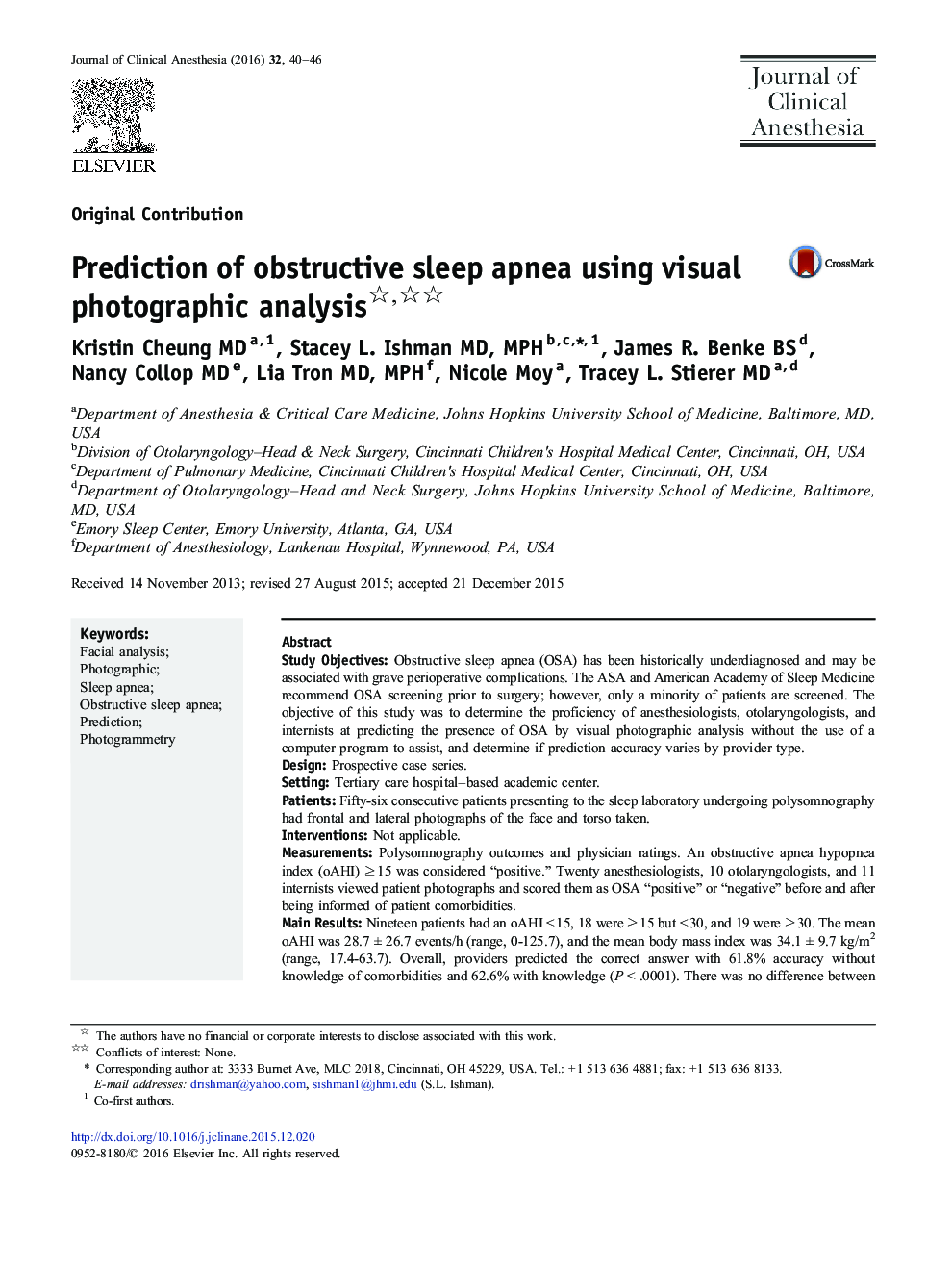| کد مقاله | کد نشریه | سال انتشار | مقاله انگلیسی | نسخه تمام متن |
|---|---|---|---|---|
| 5884778 | 1567658 | 2016 | 7 صفحه PDF | دانلود رایگان |
- Providers predicted the presence or absence of OSA correctly 62% of the time.
- Knowledge of comorbidities did not improve identification of patients with OSA.
- Prediction accuracy was related to patient BMI, but not age, gender, or race.
- The specialty of the provider had no effect on prediction accuracy.
Study ObjectivesObstructive sleep apnea (OSA) has been historically underdiagnosed and may be associated with grave perioperative complications. The ASA and American Academy of Sleep Medicine recommend OSA screening prior to surgery; however, only a minority of patients are screened. The objective of this study was to determine the proficiency of anesthesiologists, otolaryngologists, and internists at predicting the presence of OSA by visual photographic analysis without the use of a computer program to assist, and determine if prediction accuracy varies by provider type.DesignProspective case seriesSettingTertiary care hospital-based academic centerPatientsFifty-six consecutive patients presenting to the sleep laboratory undergoing polysomnography had frontal and lateral photographs of the face and torso taken.InterventionsNot applicable.MeasurementsPolysomnography outcomes and physician ratings. An obstructive apnea hypopnea index (oAHI) â¥Â 15 was considered “positive.” Twenty anesthesiologists, 10 otolaryngologists, and 11 internists viewed patient photographs and scored them as OSA “positive” or “negative” before and after being informed of patient comorbidities.Main ResultsNineteen patients had an oAHI < 15, 18 were â¥Â 15 but < 30, and 19 were â¥Â 30. The mean oAHI was 28.7 ± 26.7 events/h (range, 0-125.7), and the mean body mass index was 34.1 ± 9.7 kg/m2 (range, 17.4-63.7). Overall, providers predicted the correct answer with 61.8% accuracy without knowledge of comorbidities and 62.6% with knowledge (P < .0001). There was no difference between provider groups (P = .307). Prediction accuracy was unrelated to patient age (P = .067), gender (P = .306), or race (P = .087), but was related to body mass index (P = .0002).ConclusionThe ability to predict OSA based on visual inspection of frontal and lateral photographs is marginally superior to chance and did not differ by provider type. Knowledge of comorbidities did not improve prediction accuracy.
Journal: Journal of Clinical Anesthesia - Volume 32, August 2016, Pages 40-46
